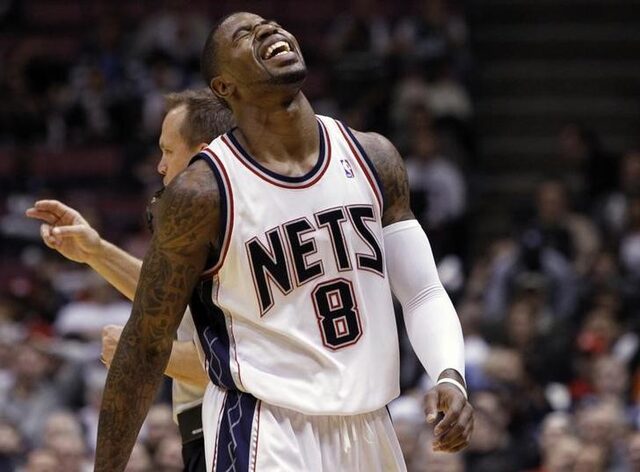Revealing who pays for the treatment of NBA players after injuries, what kind of insurance system is there, and are there salaries?
2025-01-16 18:54:18
NBA has many fans, and player injuries are an inevitable phenomenon. As the season progresses, superstars or rising stars often choose to withdraw from the season due to injuries. Not only do fans feel sorry for it, but the team will also lose a strong player and suffer a lot of commercial losses.
Given that NBA is a high-confrontation, high-risk sport, all teams will buy various insurances for players to prevent emergencies. The more common ones are disability insurance, team liability insurance, physical injury insurance, medical compensation insurance, etc. Under normal circumstances, if a player is injured during normal training and during the game, the insurance company will bear the annual treatment costs in this regard, and the player can recover with peace of mind, and the team does not have to worry about paying high medical expenses.
In fact, the types of insurance in the NBA are diverse and complicated. Look at the terms of the team's insurance contract for details. Another important thing is that the insurance company can refuse to provide insurance services for players who are prone to injury, but the number of places is limited. There are only 14 places each season that are not on the company's roster, so once these players are injured in the game, the team will be responsible at this time.
NBA officials require each team to purchase disability insurance for the top five players with the highest annual salary at the beginning of the season. Of course, the team management can also purchase it for other players, and they just need to pay the fee. In this way, if a player is injured during training and competition, most of the medical expenses will be borne by the insurance company, and the team will bear a small part.
There is a 41-clause rule in the NBA insurance regulations. If the insured player misses 41 games in a row due to injury, the insurance company will pay the player 80% of the basic salary for the missed games, and the team only needs to bear the remaining 20%. Of course, the player's insurance premium is very high, so the compensation is also high. Kobe has been injured continuously since his tendon injury in 2013, and the insurance company has never stopped compensating. The salary paid to Kobe for missing games during the injury period is nearly 5 million US dollars. Therefore, players will not worry about no one paying for medical expenses because they are injured and miss games.
If a player is injured during a non-guaranteed contract, there are two situations: if he signs a summer league contract, the team wants to cut him and give him $6,000; if he signs a formal contract, the team wants to cut him to make room for players, but continues to pay his salary until he returns to play or the season ends.
If a player is injured outside of a game, or if he participates in some high-risk sports privately, the insurance company will not pay for the injury. The team will also not pay the full salary according to the contract signed with the player. What high-risk sports are prohibited in the NBA? For example, alpine skiing, motorcycle riding, sledding, bungee jumping, etc. are all prohibited by the team.
But there are really players who do not abide by this rule, such as Radmanovich, a former Lakers player, the European sharpshooter who was beaten by Kobe on the sidelines. Radmanovich was injured during a skiing trip and had to rest for eight weeks, but he did not report the truth. Instead, he lied that he fell on the ice while buying coffee. After being found out by the team, he was fined $500,000 for violating the contract.
Each NBA team has its own professional medical team, who will take on the responsibility of treating injuries and recovery of its players. If an injury occurs that the team's medical team cannot handle, the team will hire other doctors or medical teams to help treat it. If the player himself does not believe in the skills of the team's medical team, he can also find a medical team on his own. For example, when Leonard was in the Spurs, he chose other medical teams to take care of his surgery and recovery due to disagreements with his medical teammates about injury recovery.
After the injury, the player will become an unknown number, and the contract will of course be greatly reduced due to the injury, so the player will regard the injury as the biggest enemy. On the one hand, the medical days are very painful, and on the other hand, they are also worried about the future. Whether they can recover to their original level is a big problem.
NBA is a commercial league after all, and the team's management signing players can be said to be a risky investment in itself! Assuming a player signs a fully guaranteed contract with the team, even if the player does not play a single game this season, his salary must be paid! Assuming the player has a history of injuries, the team will generally put forward conditions, such as how many games he must play this season! Bosh is an example. The team learned that he was diagnosed with an injury and could not play within a year or later, so the team chose to cut him, and the remaining salary of his contract was paid by the insurance company! So with a fully guaranteed contract, you don’t have to worry about not getting your salary!
Of course, each team will also purchase different insurances for different players based on their different physical conditions. Therefore, the injuries and expenses of most players will be reimbursed by the insurance company. And big-name players will also purchase a lot of additional insurance for themselves to ensure that their economic interests will not suffer too much loss.


